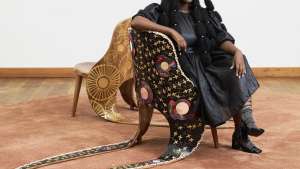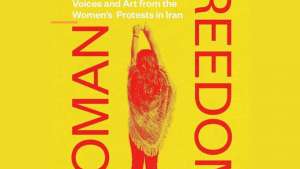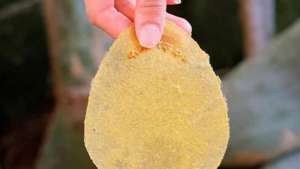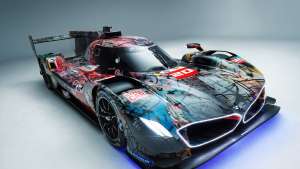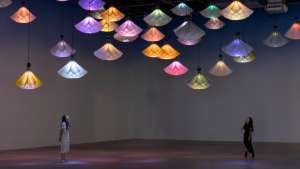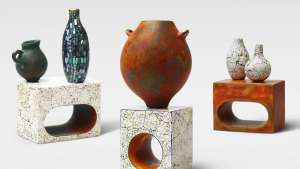Kenyan photographer Mutua Matheka has visited 10 African cities to document their complexities and contradictions, after he became tired of the stereotypical images on the internet when looking up Kenya or Nairobi.
The travel and architectural photographer says he was frustrated with finding only images that portrayed his city not as he experienced it on a daily basis, but with much of the imagery focused only on the slums, poverty or safaris.
“I know by now that this is probably a broken record because so many of us, in Africa, are tired of having our cities represented in that way. But few of us do anything about it. So then I thought, that with me being a photographer, when I Google Nairobi, I don’t see pictures that look like things I would shoot, so I decided I am going to shoot them.”
Documenting 10 African cities
The work eventually grew into an exhibition that was held in Nairobi. It was only afterwards when the idea for the photographic project, Unscrambling Africa, hit him. Matheka says he just thought it would be interesting to document different African cities in the same way that he did with his hometown, Nairobi.
He set out to document the trash and poverty, as well as the beauty of the various cities.
“I do feel that African cities, and maybe African people, are not allowed to be many things. We can only be one thing. So, I am bothered by it that most people can’t see how Nairobi could be a city that is full of trash and at the same time could be a city that is beautiful. This is not complicated – these things can exist together," says Matheka.
“We tend to allow other European cities to be anything that they want to be. You go to Paris and many of the streets smell like piss, but that does not take away from the beauty. It’s still extremely beautiful. But it still smells like piss. But both things can exist at the same time.”
Using photography to Unscramble Africa
Unscrambling Africa is a play of words on the term “The Scramble for Africa” that describes the time when Europeans occupied, divided and colonised the African continent in the late 1800s.
Using a different set of tools and his creativity, Matheka wanted to turn the idea on its head and instead come up with something a bit more positive, hence the name Unscrambling Africa.
Matheka, who first picked up a camera in 2010 while he was still studying architecture, went on to become an interior architect before quitting in 2012 to take up photography on a full- time basis. He says working a full-time office job, as a newlywed and father, started to make less sense to him the more money he made as a freelancer who also had control of his time.
He has worked with many different brands over the years, and has collaborated with artists including Design Indaba 2017 speaker, musician Blinky Bill.
Africans should tell their own stories
“Our cities and our stories have mostly been told by white male photographers and storytellers, and it it's okay they’ve done what they did. But what I am saying is that as Africans why not put our spin on our own stories?”
Matheka and his two friends, filmmaker Josh Kisamwa and behind-the-scenes photographer Joe Were, travelled by road to ten Southern African countries including South Africa, Namibia, Mozambique, Zimbabwe, Lesotho and Swaziland.
He says that the result of the project will be an Unscrambling Africa series that includes a coffee table book, a colouring book, postcards, a documentary film as well as a short web series.
Johannesburg 'a favourite'
Of all the cities he visited during the trip, Johannesburg was his favourite in terms of its vibe.
“I always love Joburg. I feel there is a nice creative energy there. I love being in Joburg and every time I am in Joburg I feel like I am more creative, if there is such a thing,” he says.
He also found Namibia’s capital city, Windhoek, and Malawi’s capital, Lilongwe, were pleasantly surprising in different ways.
Lilongwe because of how few people there were in the capital, “I was surprised by how tiny it is. How many trees it has and how few people live in Lilongwe itself.”
Windhoek surprised him, because when one hears of Namibia, people always talk about the sand dunes, but never the capital city itself. “When we got to Windhoek I realised I had no clue what this city looks like. The rest of Namibia is surprisingly flat, so I think that site was chosen for the specifically because it was easier to protect yourself when you’re in the valley.”
Matheka says the project, which he hopes to complete by the end of the year, will add to a more complex way of portraying African cities.
“I want to tell as many stories as possible. I want to tell as many diverse stories as there are people here. When I was a kid, on the travel shows of all the people travelling and driving cars all over Africa, none of those people were black, and none of those people were African.
"I want my kids to see something to which they can relate and for my son to be able to say his dad was on a sand dune in Namibia, and for it to be normal, and not something crazy or out of this world.”
More on photography:
Mario Macilao on documenting society's most vulnerable
Senay Berhe's unbounded approach to creativity
This is Rwanda is an aerial journey through the eyes of two photographers











